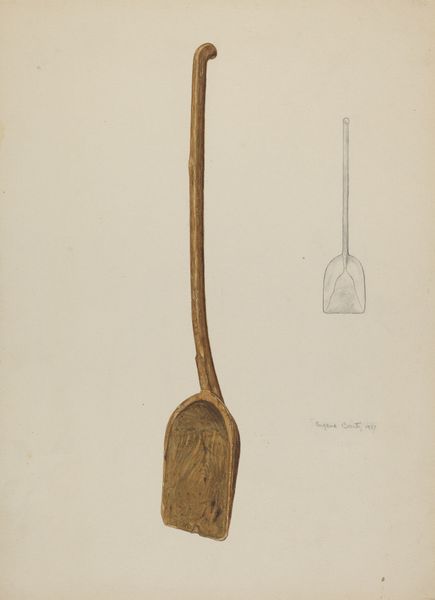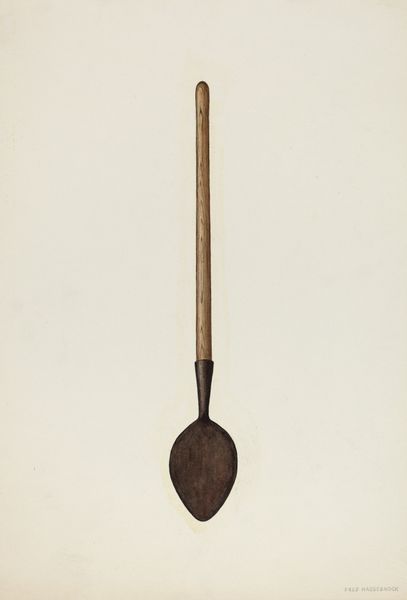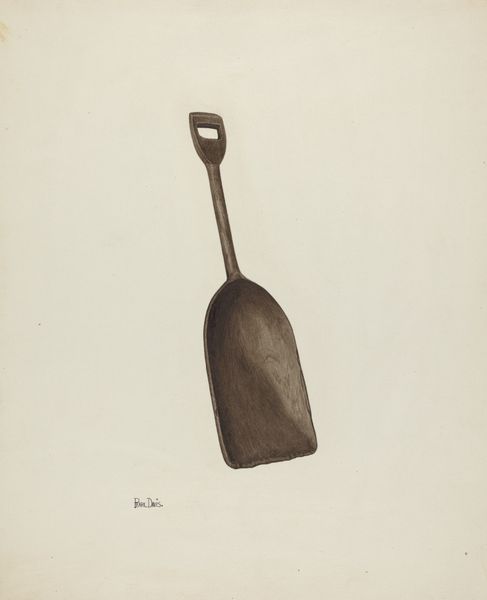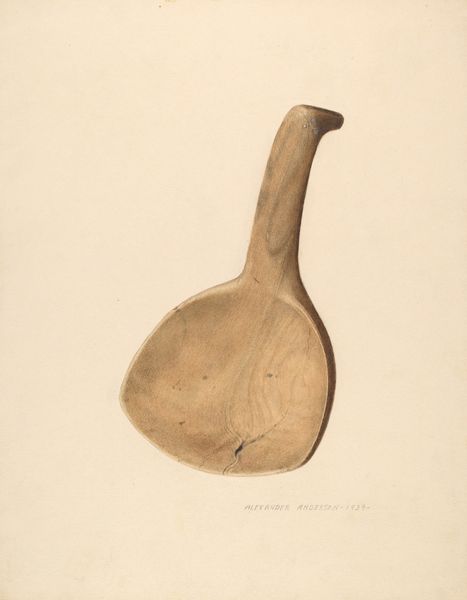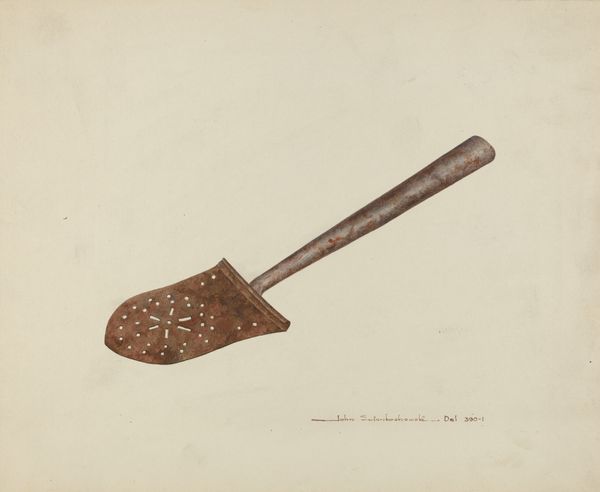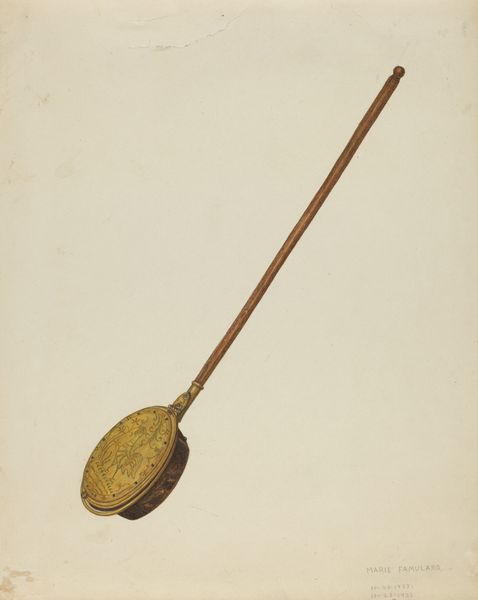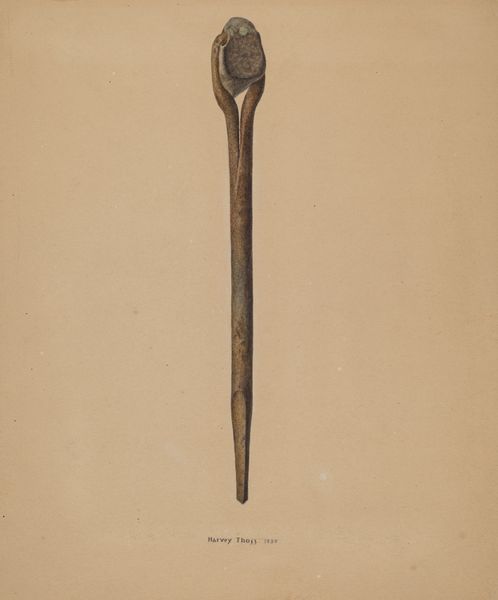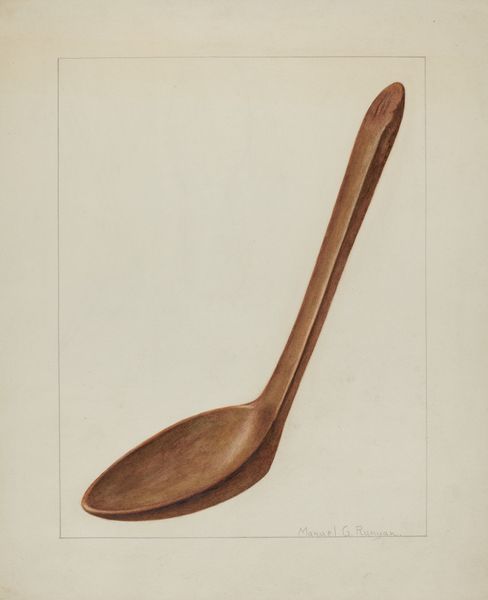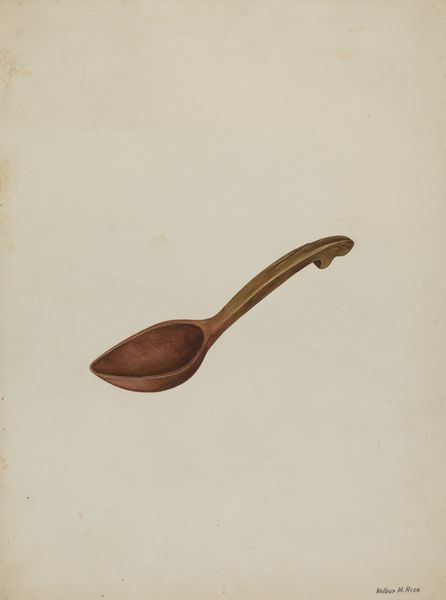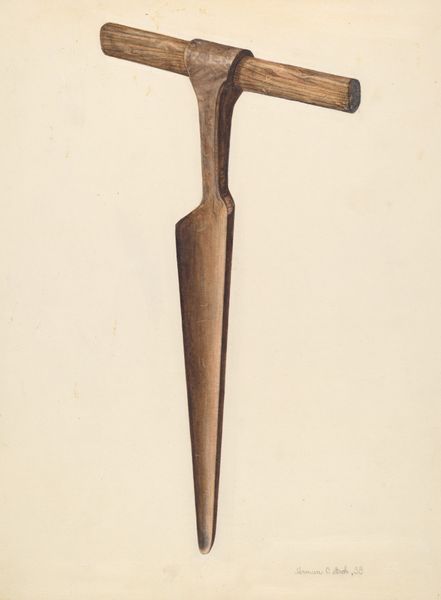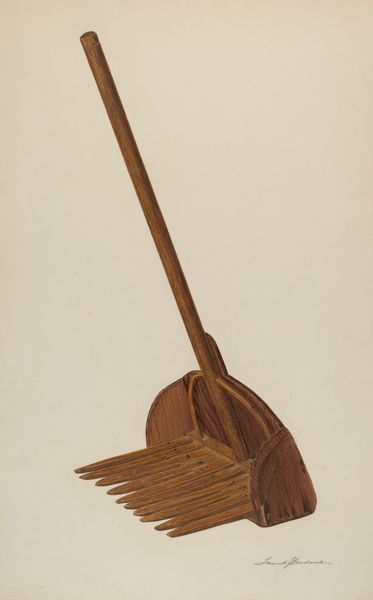
drawing, coloured-pencil
#
drawing
#
coloured-pencil
#
pencil drawing
#
coloured pencil
#
watercolour illustration
#
watercolor
Dimensions: overall: 29.2 x 22.7 cm (11 1/2 x 8 15/16 in.) Original IAD Object: 56" long; 12" wide
Copyright: National Gallery of Art: CC0 1.0
Curator: I see this “Grain Scoop,” dated circa 1936 by Hugh Clarke and realized in colored pencil and drawing, as an intersection of utility, representation, and the very act of observing the mundane. The artist compels us to acknowledge the everyday. Editor: It's such a straightforward rendering of a tool, but somehow feels elevated by the artistic rendering of the material. What catches your attention most? Curator: The obsessive focus on detail. Consider the means of production. The very precise rendering of wood grain using colored pencil requires a dedicated labor. The artistic work almost mimics the manual labor that produces such a simple tool in the first place. And what kind of consumption are we considering? Not the scooping of grain, but the consumption of art, an appreciation for form and process beyond function. How does knowing the social and economic conditions of the time change how you see the object, now? Editor: I suppose the Depression era context gives it a different weight. The drawing emphasizes the value of labor, the simple utility of this scoop in an era of scarcity. The material is rendered almost reverently. The color choice almost mimics that reverence, being quite warm and deep. Curator: Precisely! This piece challenges any high/low art binary. A seemingly simple tool becomes the object of artistic study, elevating both the material and the work necessary for its creation. How does this make you consider art differently, particularly regarding material culture and labor? Editor: I'm struck by how it encourages me to slow down, to really consider the things I usually overlook – the objects that are part of the daily labor that sustains us. It moves the tool to an art status, emphasizing the connection to labor through materiality. Thank you, I will definitely contemplate it. Curator: And I, too, will think about how it reframes value in our present moment!
Comments
No comments
Be the first to comment and join the conversation on the ultimate creative platform.

